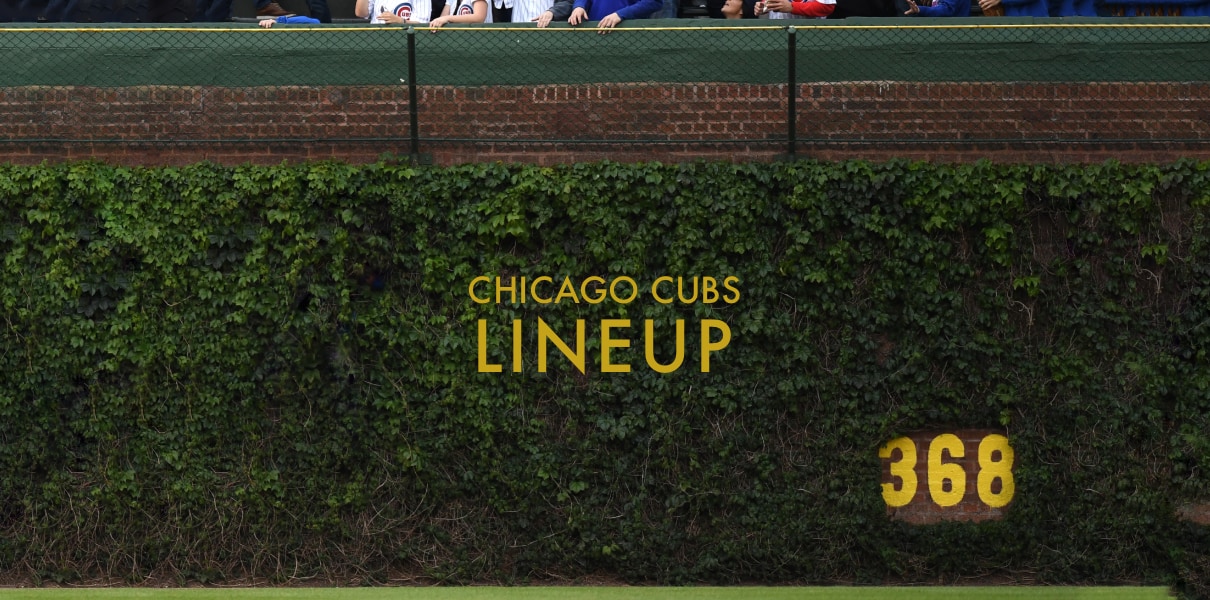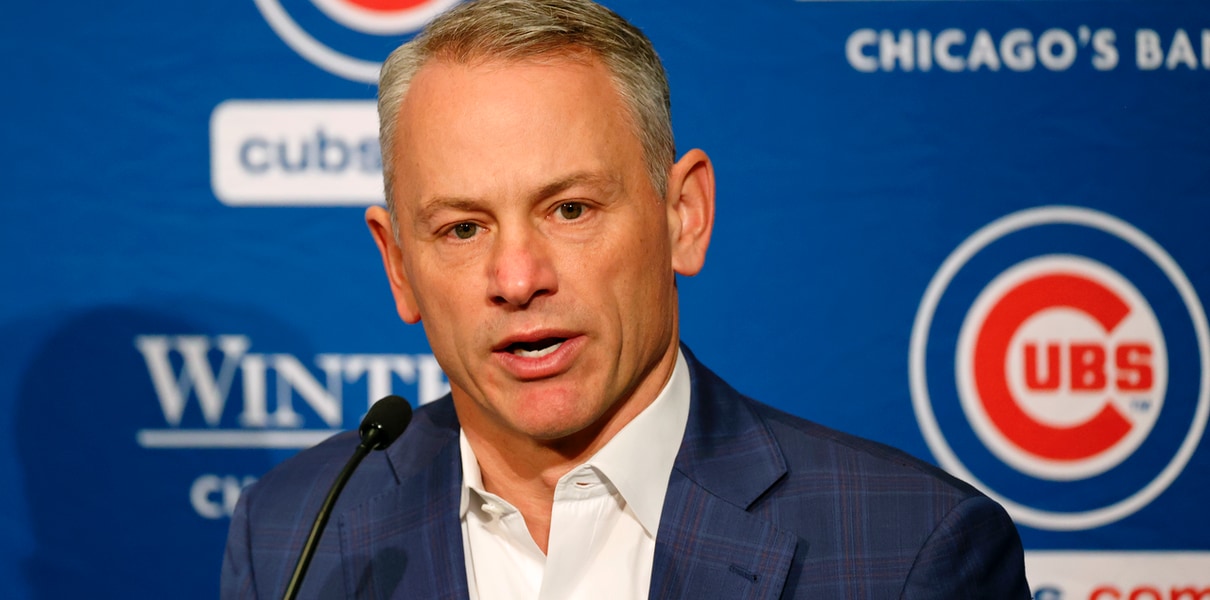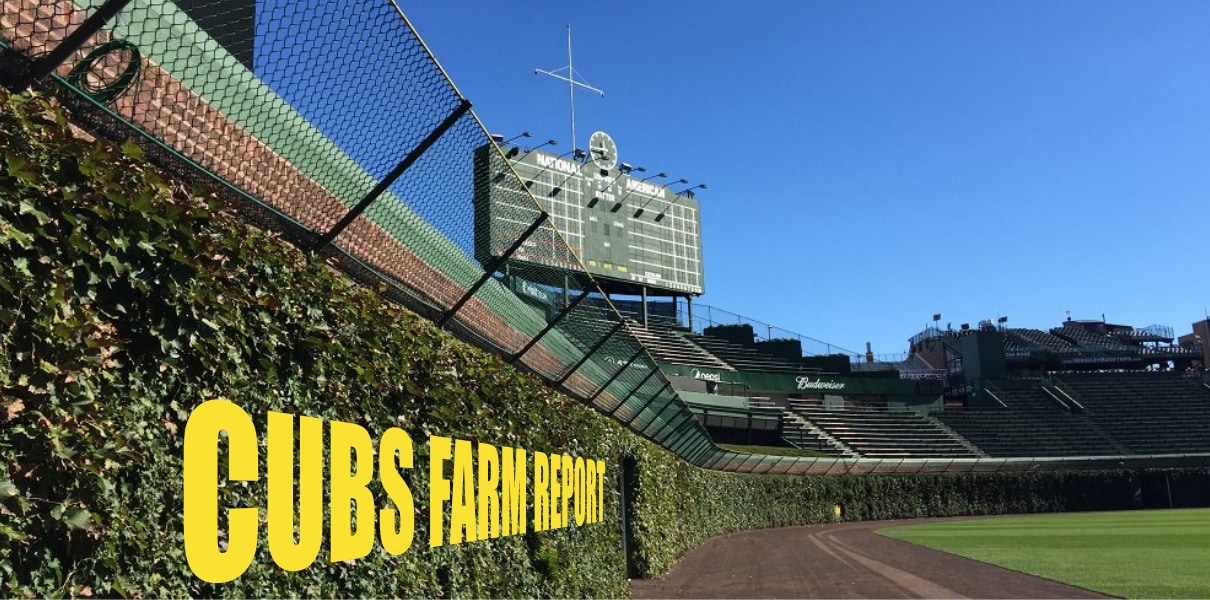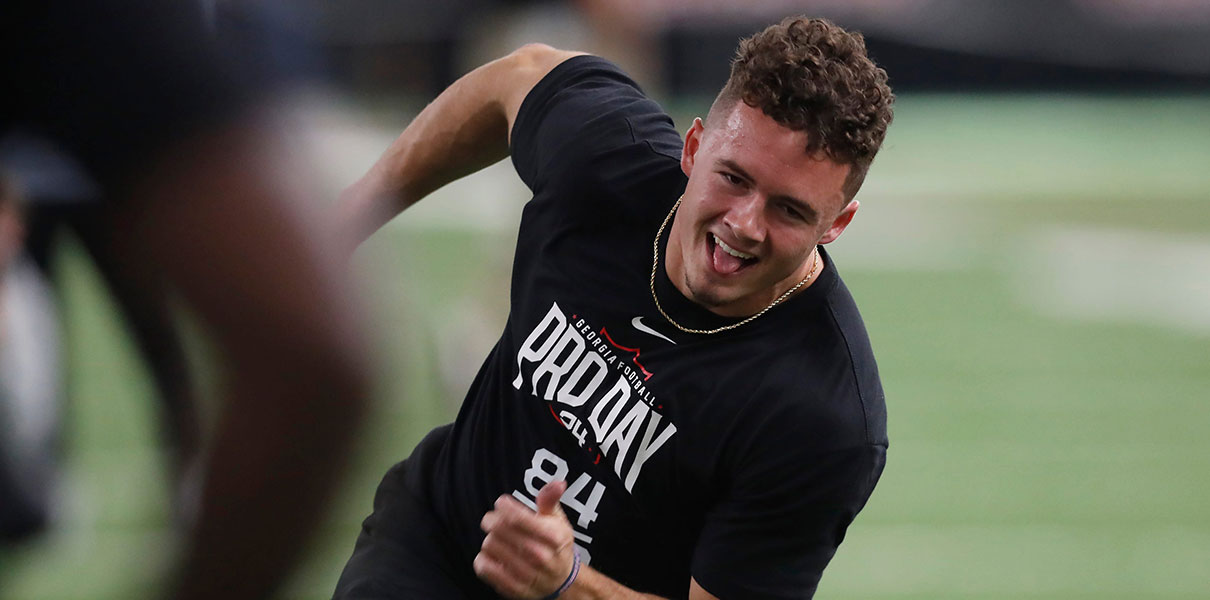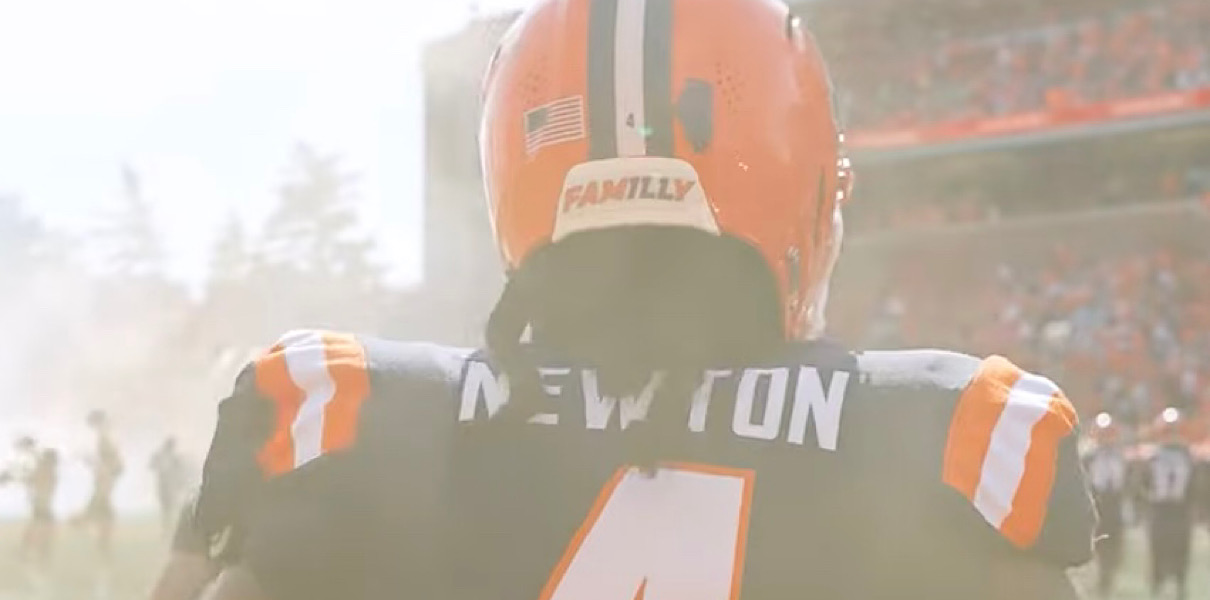In an offseason full of insinuation that the Chicago Cubs are among the major-market clubs aiming to avoid the luxury tax in 2020, I find it appropriate that we get word of just how much it cost them to exceed that tax level in 2019.
The tax? Less than the cost of a decent reliever: $7.6 million, per the AP.
With a payroll in 2019 of around $237 million for luxury tax purposes (AAV of contracts, player insurance/benefits, other 40-man players, etc.), the Cubs exceeded the first tier of the luxury tax ($206 million) and the second tier ($226 million), which comes with a surtax: you pay 20% on the amount from $206 million to $226 million, and then you pay 32% on amount over $226 million.
The Cubs stayed under the highest tier ($246 million), which costs you 10 spots in the draft, in addition to a dramatically larger tax (62.5% on any amount over $246 million). By design, the highest tier of the luxury tax is going to function as something very close to a salary cap for teams, particularly going over it multiple years in a row. Spending up to the highest tier? Big market teams should be very willing to do it. Above the highest tier? Fine, I can see how payroll costs could start to become untenably high compared to revenue.
But, as I said, the Cubs stayed below that top tier, were charged only into that second tier surtax level, yielding a total tax of $7.6 million.
On a relative basis, the $7.6 million tax added about 3.2% to the Cubs’ payroll costs in 2019. An amount that matters? Sure. It’s not nothing. An amount that should justifiably yield any freaking out? When the rest of division receives numerous competitive balance benefits under the CBA that the Cubs do not receive, precisely because the league structure *presumes* the Cubs will spend a lot more than the rest of the NL Central? No. No. This was appropriate spending. Owner and Chairman Tom Ricketts has said that Cubs revenues, after expenses, wind up going right back into baseball operations, so there should be a lot of money available for payroll each year, even if that means paying a little extra tax on top.
So, knowing what a small relative cost the luxury tax in 2019 was, why are we hearing rumors about the Cubs’ intentions to get back under next year’s $208 million first tier of a luxury tax? A level, mind you, that would not only require no new spending commitments from the Cubs, but would also require a pretty healthy chunk of payroll moved out. With every credible rumor so far this offseason, paired with the Cubs’ actual non-actions, it does seem like this is the course being taken for 2020.
Without passing judgment – for now – on whether it is a good or horrible thing, I wanted first to just understand the rationale behind why the Cubs (and, clearly, other large market teams) would be so averse to going over the luxury tax multiple years in a row during the current CBA era. Why is it so important to get back under that level right now? Is it really that expensive to be repeat luxury tax offender?
Well, no. But also kinda yes.
I dug in quite a bit more on this, and I’ll admit up front: I’ve been a little too glib in not acknowledging that the dollars can escalate rapidly after the first year of being over the tax, especially as you get to years three and beyond. I’m not defending the spending practices of any of these large-market clubs, only pointing out that, yeah, the CBA really did everything it could to discourage teams from going hog wild on payroll. The money at stake is more than I previously thought, and it can be a lot more than folks like me have been discussing.

Let’s talk about repeat tax offenders.
The change in the tax level when you’re a first time repeater (i.e., over the tax two years in a row) is really not that onerous. This has been the primary focus for outsiders in these discussions, and were it the only consideration, there would be almost no excuse whatsoever – even from a financial perspective – to work so hard to get under the luxury tax at an otherwise competitive time.
Here’s how the tax level works after your first year in the red zone, so to speak.
When you are in your second season over the luxury tax, your first tier tax becomes 30% instead of 20%, your second tier tax becomes 42% instead of 32%, and your third tier tax becomes 75% instead of 62.5%. F
For the Cubs, as an example, if they exceeded the luxury tax by the same amount next year (about $31 million, so a $239 million payroll with a new first luxury tax tier of $208 million), instead of being charged a $7.6 million luxury tax, they’d be charged about $10.6 million. A sharp increase relative to the previous year’s tax? Yes, absolutely. That’s nearly a 50% bump. But as a relative chunk of your total payroll costs? It’s not even a 2% bump from the year prior. So keep it in perspective.
That said, the increase in the tax on a repeat year, is not the only financial consideration associated with being over the tax. There are at least two others.
For one, when you’re over the tax, you don’t get to share in the redistribution of those tax proceeds. After the first $13 million collected by the league goes to fund player benefits, 50% of the remainder goes evenly to the teams that didn’t exceed the luxury tax.
That’s going to be a comically small number this year (about $7 million distributed evenly among 27 teams, or about $260,000 per non-luxury-tax team), but given some of the major commitments this offseason by large-market clubs – particularly the Yankees as repeat-offenders – I expect that pool to be significantly larger next year.
For another financial consideration – a biggy – being over the luxury tax means you can lose some or all of the revenue-sharing funds you would have otherwise had refunded by the league. This part is absurdly complicated (see CBA Article 26 if you want all the details on the revenue sharing plan), but the gist is: every team pays into a revenue-sharing pool (large-revenue clubs pay more, obviously), which is then distributed among the smaller-market teams. But even big-market teams can get some of what they paid back in the form of a “Market Disqualification Refund” … unless they’re over the luxury tax threshold in consecutive years.
If you’re over the luxury tax just one year, you still get your full refund. But if you’re over a second year, you lose 25% of that refund. Over a third year? You lose 50% of the refund. And so forth.
But how much is that “Market Disqualification Refund” anyway?
Well, the precise amount is not going to be entirely accessible to us because MLB’s revenue figures for the various markets aren’t public information. But we can do some ballparking from what is available, from the revenue-sharing formula, and from Craig Edwards and Wendy Thurm’s work on the Yankees’ revenue-sharing situation here at FanGraphs.
Based on that information, the Cubs’ refund is likely in the $30 to $40 million range – but that’s a really rough sketch. Could be much higher. Could be a little lower. The point here is less about the precise number, and more about the general scale.
So, let’s say it’s $40 million for the Cubs next year. If they didn’t get back under the luxury tax, they’d get back only $30 million of those dollars.
Furthermore (more complications! hooray), there’s a little added incentive right now for the largest-market teams not to lose out on their revenue-sharing refunds, because – to put it as simply as possible – the Oakland A’s are being transitioned from “small market” to “big market” over a multi-year period. That is going to make more money available to be refunded to the other big market teams, so long as they aren’t over the luxury tax. The amount should be upwards of several million dollars for a team like the Cubs, based on Craig Edwards’ calculations.
So, then, let’s put some EXAMPLE dollars on this to get a better sense of what it “costs” to go back over the luxury tax a second year in row. If the Cubs went about over the luxury tax in 2020 like they did in 2019, the total extra cost to them would include four parts: (1) the tax, itself, which is at a higher rate than in 2019 (could be ~$5-10M, depending on how much they’ve gone over luxury tax), (2) the payout of the collected luxury taxes (could be ~$1M, depending on how much is paid in next year – should be a lot, because the Yankees will be second-time offenders with a huge payroll), (3) 25% of the Cubs’ revenue-sharing refund (could be ~$10M), and (4) the extra money due to the Oakland A’s phase out (could be ~$4M).
On the whole, then, you’re looking at around $20 to $25 million in additional cost to the Cubs associated with being over luxury tax again in 2020. Previously, I’d poo-poo’d the repeat offender issue as being only a couple million marginal dollars in consideration. I should have dug in more before I spouted off, because clearly it’s potentially 10 times that much.
That said, is $20 to $25 million in extra costs enough to justify clamping down spending an artificially aiming to get under the luxury tax this year? Your mileage may vary on that one. I know that there has to be a line somewhere, but I also know that well-meaning folks will disagree on that one.
But, getting under the luxury tax in 2020 isn’t just about 2020’s expenses. Thanks to the way the penalties keep growing, a 2020 plan necessarily impacts 2021 and beyond, too.
If you want to be hopeful and optimistic, you could say that the Cubs want to get under the luxury tax in 2020 because they plan on exceeding it the next year, at which point they would have become third time repeaters. They want to avoid that, your hopeful brain says, because the Cubs know they’re going to spend big next year, and they’re just trying to be efficient! Yeah, that’s the ticket.
For what it’s worth, when you’re in your third year over the luxury tax (that would be the Cubs in 2021 if they don’t reset in 2020), the financial considerations increase dramatically – that extra $20 to $25 million could easily exceed $50 million in a third year over the luxury tax (more if you were planning on really pushing payroll) – because of the exponential increases in the tax rate and losing 50% of your revenue-sharing refund.
I should also point out the modest baseball-related considerations associated with being over the luxury tax (draft pick penalties for signing qualified free agents go up slightly, what you receive in draft pick value for losing qualified free agents goes down slightly). They exist, they matter, etc. Not huge. But they are there.
On the whole, I don’t want to act like there are *NO* reasonable excuses for staying below the luxury tax, at least for a year in the middle of a stretch of seasons over the tax. It is a consideration. It just shouldn’t be a guiding principle in an otherwise competitive year or years, but I can’t act like an added $25 to $50 million in expenses is a non-consideration.
I might not like any of this as a fan, but that is the financial reality created by the CBA and clubs/owners that are not interested in paying out of pocket for salaries and taxes.
Putting it another way: The system in place makes it much cheaper for the Cubs to have a $207 million payroll in 2020 and then a $250 million payroll in 2021 than to have a $209 million payroll in 2020 and then a $211 million payroll in 2021. It’s an absurd extension of the way these penalties are structured, but it’s true.
And I suppose if you think you don’t have as great a shot in 2020 as you might in 2021 anyway, you start to think about structuring your roster toward those efficiencies, I guess. That is to say, it would make both competitive and financial sense to reduce payroll this year while also trading away from the big league roster, and then kinda going a little nuts next year.
Increasingly, I feel like I see why the Cubs – at an ownership level, at a front office level, and at a roster level – are aiming to “step back” in 2020, and have been for a while.
In other words, I still don’t want to see the Cubs working hard at this time to get under the luxury tax, but at least I now have a better understanding of the financial considerations attached to those efforts. And if the Cubs do get under the luxury tax in 2020, you better dang well believe I’ll want to see them right back over it in 2021. Aggressively.




